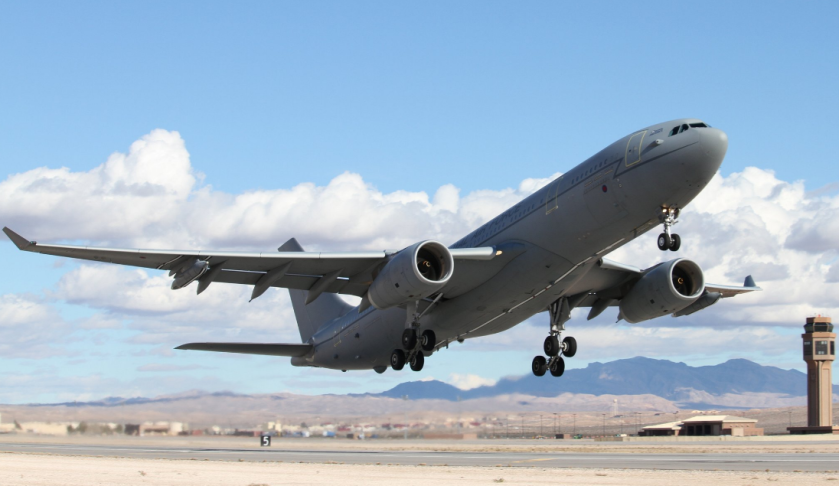The French Air Force has officially welcomed its first A330 Multi-Role Tanker Transport (MRTT) into service, joining a growing number of countries, including launch customer Australia, to operate the versatile aircraft.
To continue reading the rest of this article, please log in.
Create free account to get unlimited news articles and more!
With the French Air Force now receiving the first of its 15 expected A330 MRTT Phénix, as they are to be known in French service, the number of countries flying the aircraft has increased to six, including:
- Australia;
- Saudi Arabia;
- Singapore;
- United Arab Emirates; and
- The UK.
Germany has four aircraft on order, which will be owned by NATO as part of the Multinational MRTT Fleet (MMF), and the Netherlands also has two aircraft on order to be owned by NATO as part of the MMF. Both Belgium and Norway have an aircraft on order to be owned by NATO as part of the MMF.
These European orders are joined by a four plane order from South Korea and a five plane order from Singapore (one has been delivered), bringing the total projected global fleet to 62 aircraft.
The French MRTT are slated to replace the French Air Force's ageing Boeing KC-135R tanker aircraft, as well as Airbus A340 and A310 aircraft currently being used in the personnel airlift capacity.
Capable of carrying 111 tonnes of fuel, the A330 MRTT has the highest capacity of all aerial tankers, able to offload 50,000 kilograms of fuel while airborne to a broad range of receiver aircraft during a typical four-hour loitering mission at over 1,000 nautical miles from its takeoff point.
In 2011, the Royal Australian Air Force became the launch operator of the A330 MRTT, which it designates locally as the KC-30A.
Australia's KC-30A's recently marked a number of major milestones for the aircraft type, with a KC-30 returning from operational deployment in the Middle East as part of Operation OKRA, Australia's contribution to dismantling Islamic State.
Additionally, Australia's KC-30A's delivered 100,000,000 pounds of fuel in support of continuing coalition strikes in the Middle East. Chief of Joint Operations Air Marshal Mel Hupfeld said at the time that the reliability and large air-to-air refuelling capability of the KC-30A has added tangible value to the Australian and coalition forces, with their large demand for aerial refuelling.
"Just one KC-30A can support the deployment of four fighter aircraft over 5,000 kilometres and has the versatility to refuel a range of different aircraft types. From Australian C-17A Globemaster IIIs to US Marine Corps AV-8B Harriers, British Eurofighters and French Dassault Rafales, the KC-30A can keep these planes in the air efficiently and effectively," AIRMSHL Hupfeld said.
The KC-30A MRTT is fitted with two forms of air-to-air refuelling systems: an advanced refuelling boom system mounted on the tail of the aircraft and a pair of all-electric refuelling pods under each wing.
These systems are controlled by an air refuelling operator in the cockpit, who can view refuelling on 2D and 3D screens. The KC-30A can carry a fuel load of more than 100 tonnes, and transfer part of that load to compatible aircraft, including:
- F/A-18A/B Hornets;
- F/A-18F Super Hornets;
- E/A-18G Growlers;
- E-7A Wedgetails;
- C-17A Globemaster III; and
- Other KC-30As.
The RAAF has six KC-30A aircraft in service, with one additional aircraft on order, operated by No. 33 Squadron from RAAF Amberley in south-east Queensland.

 Login
Login







